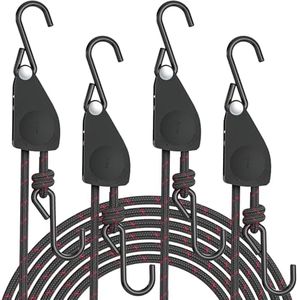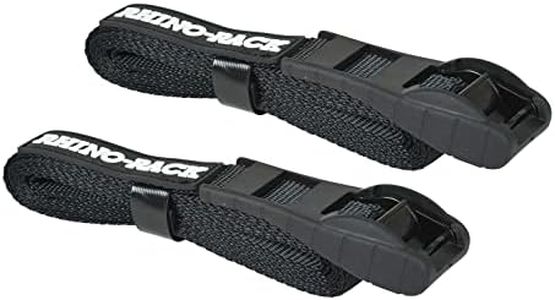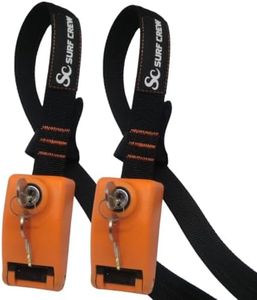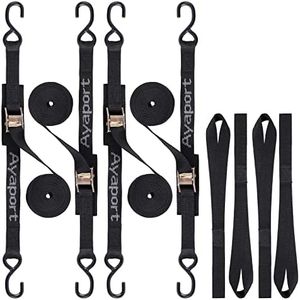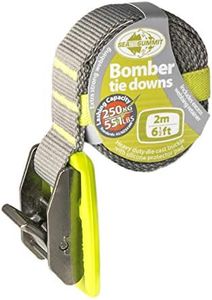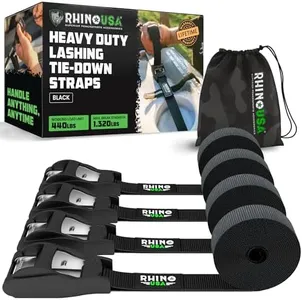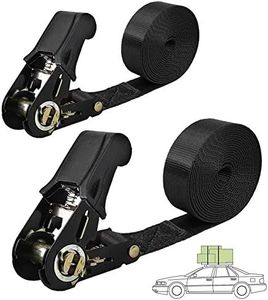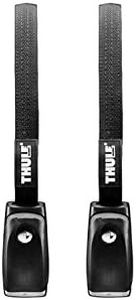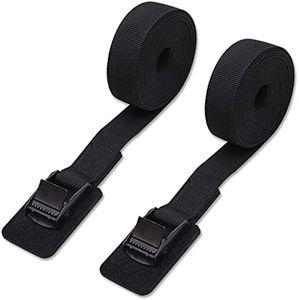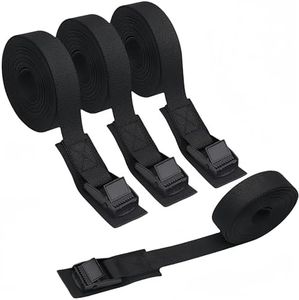We Use CookiesWe use cookies to enhance the security, performance,
functionality and for analytical and promotional activities. By continuing to browse this site you
are agreeing to our privacy policy
10 Best Kayak Tie Down Strap
From leading brands and best sellers available on the web.Buying Guide for the Best Kayak Tie Down Strap
Choosing the right kayak tie-down strap is crucial for safely transporting your kayak to and from the water. A good strap keeps your kayak secure during transit, prevents scratches or damage, and offers peace of mind while you're driving. When shopping for tie-down straps, it's important to look at how easy they are to use, how strong and reliable they are, and how they will interact with your vehicle and your kayak. Below are the most important factors to consider and how to navigate them.LengthThe length of a kayak tie-down strap determines whether it is long enough to wrap securely around your kayak and anchor points (like your roof rack or trailer). Straps usually range from about 8 feet (2.5 m) to over 20 feet (6 m) in length. If you have a small kayak or tight mounting points, a shorter strap is easier to manage and won’t leave a long tail. Longer straps are more versatile, especially if you transport larger kayaks, carry multiple boats, or have a bulky roof rack. Consider the length of your kayak and how you’ll tie it down—it's better to have a bit of extra length (which can be rolled up) than to realize your straps are too short.
WidthStrap width affects the strength and how it grips your kayak. Most kayak tie-down straps are 1 inch (about 2.5 cm) wide, but you may find narrower or wider versions. A 1-inch strap is standard and provides a good balance of strength and surface area, making it less likely to cut into or damage your kayak. Wider straps can offer more protection but may be more cumbersome to thread through buckles. If you’re transporting a heavy or valuable kayak, opt for standard or wider straps to distribute pressure evenly.
MaterialThe material of the strap influences its durability, resistance to wear, and grip. Most straps are made from nylon or polyester. Polyester is typically favored because it stretches less and resists water, UV rays, and abrasion better. Nylon straps have more stretch and can sometimes absorb water, which may lead to loosening when wet. For most users, look for polyester straps for their durability and reliability, especially for frequent outdoor use.
Buckle TypeThe buckle is the hardware that secures your strap. Cam buckles are most common for kayak tie-downs because they’re easy to tighten and release by hand, and they’re less likely to overtighten and damage your boat. Ratchet buckles provide more tightening force but can risk over-tightening and denting softer kayaks. If you want simple, easy, and gentle securing, go with cam buckles. For extra security on heavy loads, ratchet buckles might be suited, but always use with care.
Padding/ProtectionSome straps include protective pads or covers near the buckle area to prevent scratches or pressure marks on your kayak. This feature is important if you have a delicate, composite, or painted kayak, as metal buckles or rough straps can cause cosmetic damage. If you want optimal protection for your kayak’s finish, choose straps with built-in buckle pads or plan to add your own protection (for example, wrapping a towel around the buckle area).

